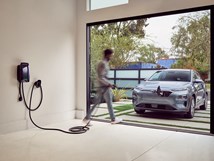NHTSA Shortens Petition Process to Test Driverless Cars
The U.S. has streamlined the process it uses to grant temporary exemptions from vehicle safety standards for developers of advanced technologies such as autonomous cars that don’t have steering wheels.
#regulations
The U.S. has streamlined the process it uses to grant temporary exemptions from vehicle safety standards for developers of advanced technologies such as autonomous cars that don’t have steering wheels.
The new rule speeds up the internal protocol followed by the National Highway Traffic Safety Administration to decide whether a petition is complete enough for public review. The procedure applies to temporary exemptions for safety and bumper standards.
General Motors Co., for example, applied in January for an exemption that would allow it to launch a ride-sharing fleet of fully robotic shuttles.
NHTSA says the measure should shorten the process of gaining waivers. The agency emphasizes that the new rule retains the current philosophy that any technology seeking an exemption must provide a level of safety at least equal to that required by the rule being waived.
RELATED CONTENT
-
Jeeps Modified for Moab
On Easter morning in Moab, Utah, when the population of that exceedingly-hard-to-get-to town in one of the most beautiful settings on Earth has more than doubled, some people won’t be hunting for Easter eggs, but will be trying to get a good look at one of the vehicles six that Jeep has prepared for real-life, fast-feedback from the assembled at the annual Easter Jeep Safari.
-
Plastics: The Tortoise and the Hare
Plastic may not be in the news as much as some automotive materials these days, but its gram-by-gram assimilation could accelerate dramatically.
-
When Automated Production Turning is the Low-Cost Option
For the right parts, or families of parts, an automated CNC turning cell is simply the least expensive way to produce high-quality parts. Here’s why.








